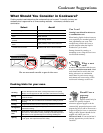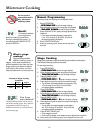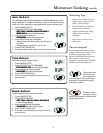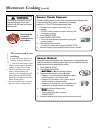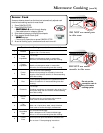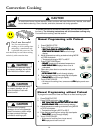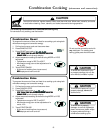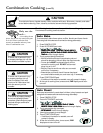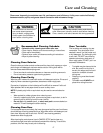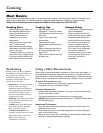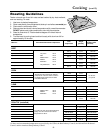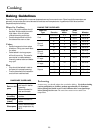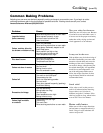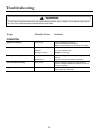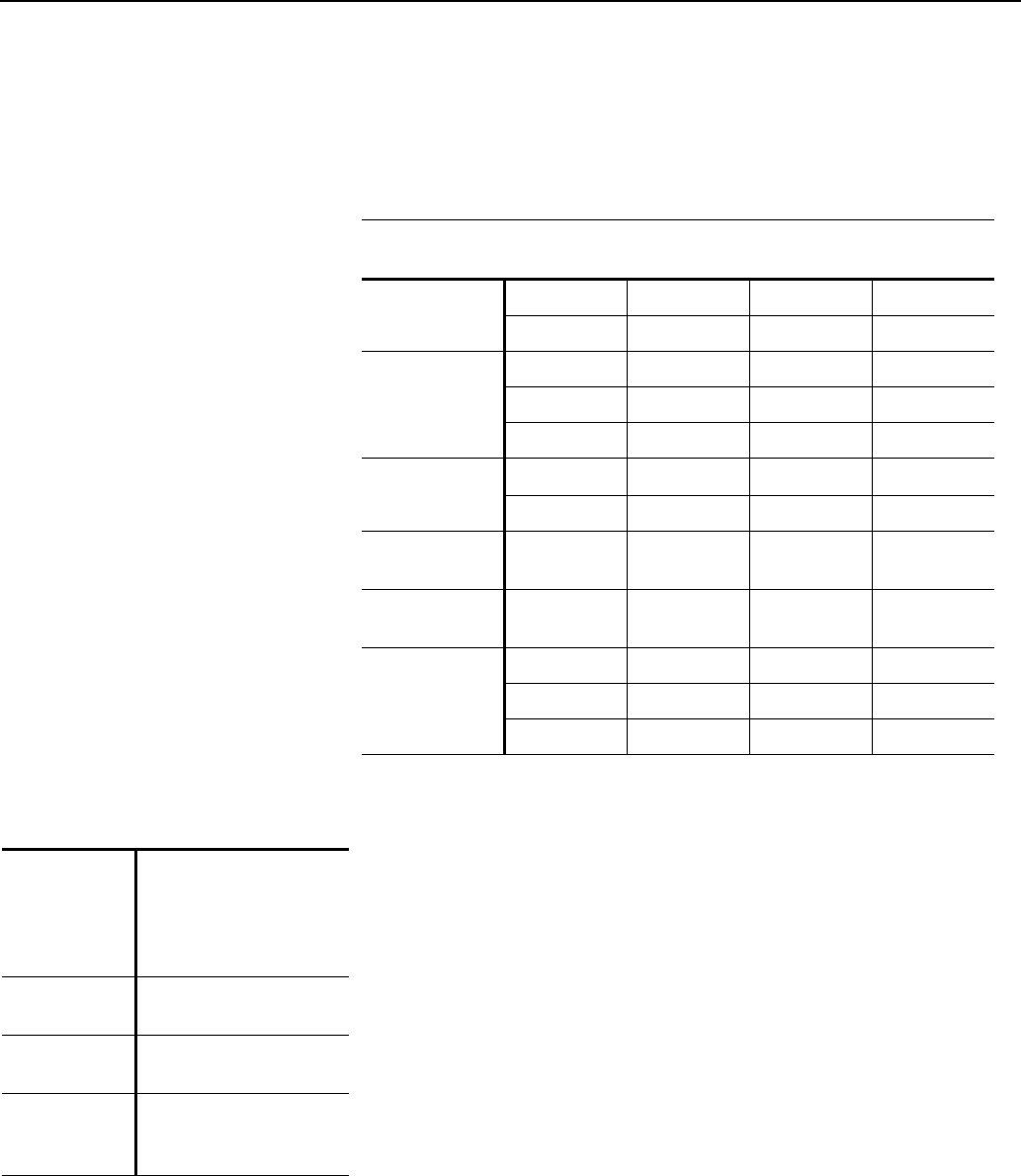
20
BAKEWARE GUIDELINES
Dark or dull
pans
Absorb more heat
and result in darker
browning.
Recommended for
pies and breads.
Shiny pans
(no sides)
Recommended for
cookies.
Shiny pans
(sides)
Recommended for
cakes
Glass pans
Lower recommended
oven temperature by
25°F.
Baking Guidelines
Remember when baking with a new oven temperatures vary from oven to oven. Store-bought thermometers are
generally not accurate and cannot be used to evaluate oven temperatures. Ingredients should be at ambient
temperature prior to baking.
Hints for Cookies,
• Shiny, flat cookie sheets should
be used. Avoid cookie pans with
high sides—this will cause
uneven browning on the top.
• Cookie sheet should not touch
the sides of the oven or door.
Cakes,
• Determine pan size from recipe
directions. Shiny pans work best
for cakes.
• Cake baked in too large a pan
will be thin and dry. Too small a
pan results in undercooked or
unevenly cooked cake and batter
may spill.
Pies
• Pies should be baked in dark or
dull pans to increase browning.
• Frozen pies should be heated on
an aluminum cookie sheet.
Cooking
BAKING TIME GUIDELINES
Cake Pan
Type
Pan size
Cups of
batter
Oven
Temp.
Minutes
7 ¾” x 5 ¾” 2 ½ 350°F 25 to 30
Oval
13” x 9 ¾” 8 350°F 25 to 30
6” 2 350°F 25 to 30
8 “ 3 350°F 30 to 35
Round,
2” layer
14” 10 350°F 50 to 55
8” 5 325°F 60 to 65
Round,
3” layer
12” 11 325°F 75 to 80
Half Round,
2” layer
18” 9 325°F 60 to 65
Half Round,
3” layer
18” 12 325°F 60 to 65
6” 2 350°F 25 to 30
10” 6 350°F 35 to 40Square
16” 15 1/2 350°F 45 to 50
Preheating
In most cases, you should preheat the oven before baking. For delicate baking
(such as puff pastries or souffles), preheat approximately 15–20 minutes
before placing food inside oven or wait 10 minutes after oven signal beeps
before placing food in oven. The extra time creates a more stable oven
temperature.



